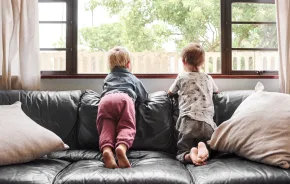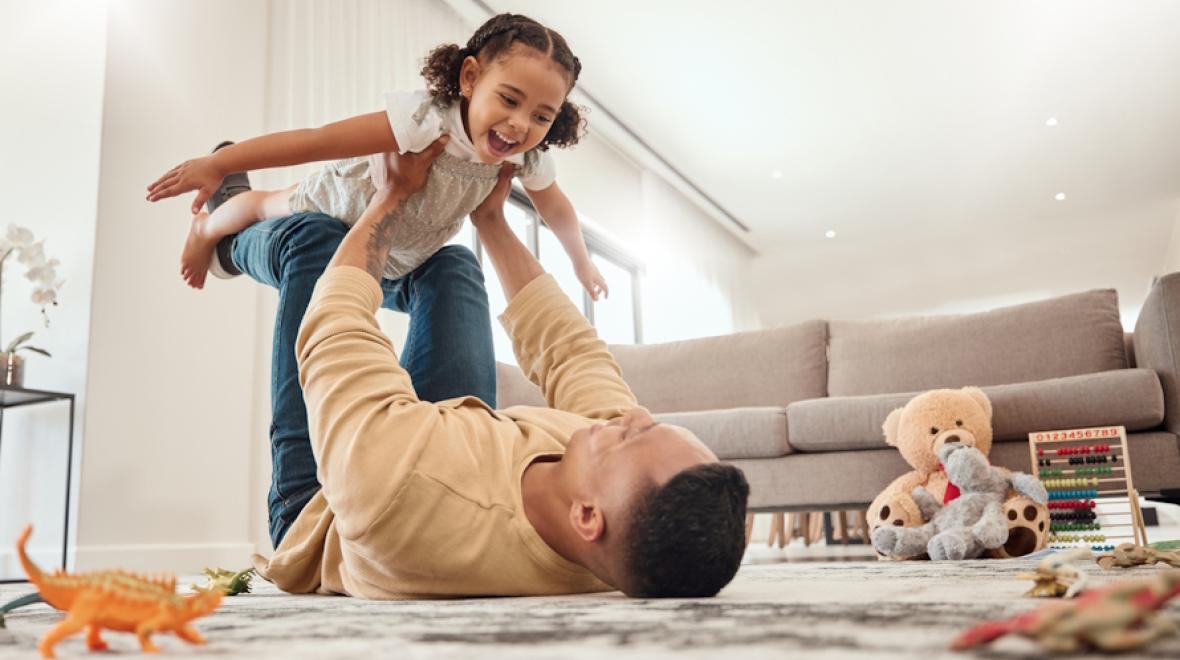
As a mother of three, juggling the needs of kids at different ages and with different relationship dynamics can be challenging. But one of my biggest challenges so far was having my 5-year-old at home without her siblings for the first time. When they went off to school, it became clear that she didn’t know how to entertain herself. I felt drained by her constant need for companionship and distraction.
Over time, I figured out some time-tested strategies and routines to ease her agitation at being home alone and to make our time together work better. Here are some solutions for retaining your sanity while fostering your child’s independence.
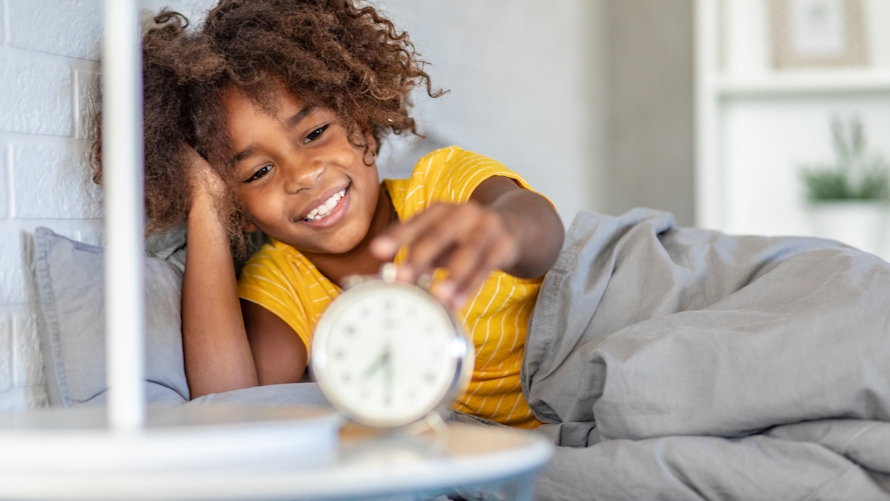
1. Maintain a regular routine.
Young children are constantly developing; learning and encountering new challenges can leave them feeling unsettled. A predictable routine reassures them that an adult will meet their needs. Organizing the day around regular events rather than hours and minutes is a good way to help children understand the concept of time.
Routines also help parents to establish boundaries. With a routine in place, families are more likely to stick to healthy expectations because it becomes the "normal" thing to do in your household. Over time, children will begin to take charge of their own activities (brushing teeth, getting dressed) without constant reminders. Their sense of competency and independence increases.
Adopt some of these simple ways of establishing a comforting routine in your household:
- Create and stick to a morning routine with a set time for waking up and a pattern for the regular morning activities, such as getting dressed and brushing teeth.
- Have predictable family mealtimes around a table.
- Keep bedtimes consistent.
- Set a time for particular activities such as watching television, reading stories or playing outside.
- Plan one main activity each day, e.g. going to preschool, meeting friends, going to the park.
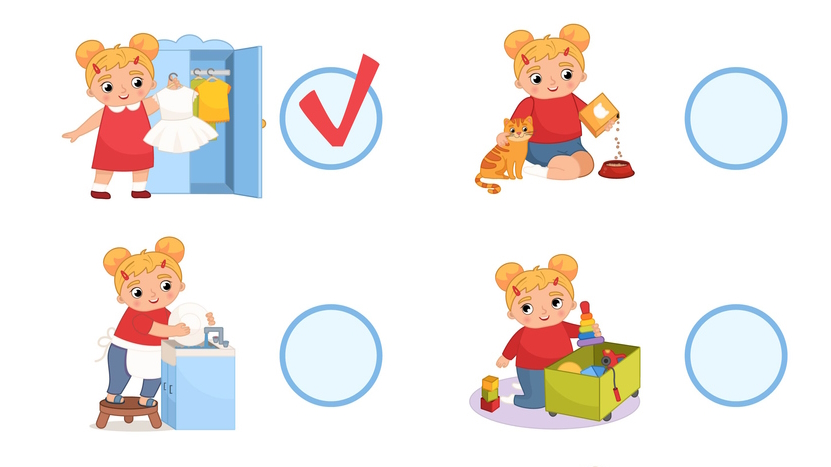
2. Use a visual timetable.
To make routines visible, create a visual timetable — a chart depicting a sequence of key events in a child’s day, in picture format. They are commonly found in schools or preschools but work equally well in a home environment
How to make a visual timetable:
- Print or draw a series of picture symbols or photographs that illustrate key activities in your child’s day.
- Make your own chart using a laminated template, bulletin board or felt board.
- Attach the pictures in sequence using sticky tack, pins, magnets or Velcro.
- As each event is completed, remove the corresponding picture, so children can clearly see what will happen next.
- If your goal is to encourage independent play, then it might be helpful to make a visual timetable that shows your activities alongside your child’s. This will help them anticipate when they need to play independently and when they have special focus time with you.
- Encourage choices by using a surprise symbol or a generic symbol for play or together time.
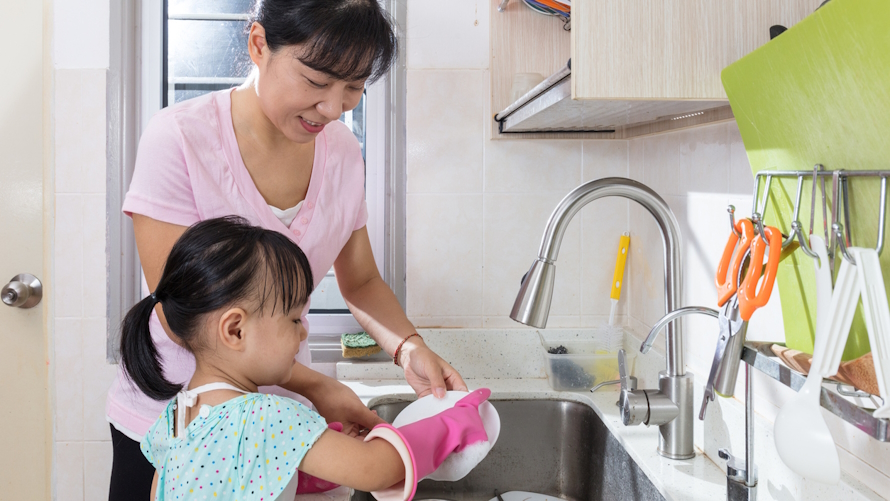
3. Involve children in chores.
Young children love responsibility and being engaged in meaningful work. Age-appropriate chores will foster independence, grow life skills and result in a sense of achievement.
Fun chores for young children include:
Washing dishes: A bowl of soapy water is a treat for a young child. They may not clean dishes perfectly but it will keep them occupied while you attend to other kitchen chores. I mostly use the dishwasher but keep a small number of dishes aside for my daughter to handwash.
Wiping surfaces: Find an area that they can wipe with a cloth and cleaning spray or baby wipe. Walls, low tables, baseboards, patio doors or sinks work well. If you are not comfortable with your child using cleaning sprays, fill a spritzer with soapy or plain water.
Sweeping or yard work: Give your child a child-sized broom or gardening tool. My daughter loves to rake leaves, sweep pathways or pull weeds.
Sorting clean laundry: This is a perfect activity for practicing early mathematical skills. Pair socks, or sort clothes and put them in a separate pile for each family member.
Cooking and preparing food: Food preparation promotes healthy eating habits, fine motor skills, measuring, science and safety. Younger children can fetch ingredients and help to mix and pour, progressing to peeling and chopping, measuring, mashing and baking as they get older.

4. Involve children in your hobbies.
Parents tend to believe that the things we once enjoyed are impossible to do now that we have young children. Over time I learned that my children love to do grown-up hobbies with me.
Fitness: Children naturally mimic their parents, so enjoy copying exercises, trying yoga positions or watching a fitness video. If you prefer running, run with a jogging stroller or have older children cycle or ride a scooter alongside you (here are some great paths for running or walking with a stroller around Seattle). Fix a child seat or trail gator to your bike and go for a ride.
Arts and crafts: If crafts are your hobby, give children a selection of your materials to explore and teach them techniques as they become more skilled and mature. My daughter loves to use a canvas and palette of acrylic paints to paint alongside me. Other activities that work well for kids younger than 5 are scrapbooks with scissors, glue and stickers, modeling clay, stringing beads and sewing.
Music: Play music for them to sing along or dance to, listen to music together or give them a small keyboard with headphones while you practice your instrument.
5. Together time is fun.
Being with children all day can be exhausting, so don’t feel obliged to fill your child’s day with activities or keep playing the same repetitive game your child requests. “Play should never ever be a duty; it should always be for fun. Play, by definition, is something that you want to do; so if you 'play' with your child without wanting to you are not playing.” So opines Peter Gray, author of “Free to Learn.”
The idea that parents should play with their kids is a uniquely modern, Western idea. Observe the way teenage babysitters or older siblings play. They are rarely reluctant to play with younger ones. Find things that are fun for both of you: Teach them a card or board game or a game from your own childhood.
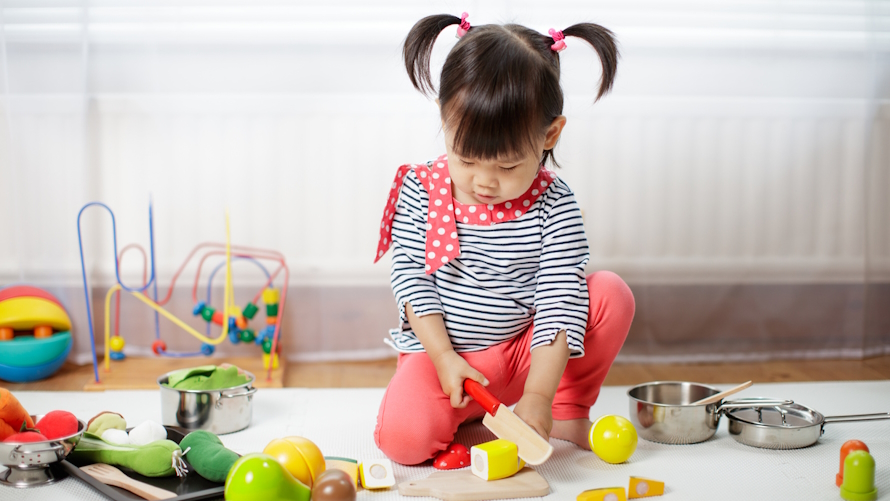
6. Encourage independent play.
Independent playtime allows children to feel refreshed and learn in a different way, and it gives parents a break. Magda Gerber, founder of RIE, observed that children flourished in play in the presence of their caregivers but when the caregiver took over, made suggestions or controlled the play scene, they concluded that their own form of play was not valued.
Parent education expert Janet Lansbury suggests a number of strategies for encouraging independent play:
- Don’t take over — Be a patient observer from a reasonable distance.
- Set times for together time.
- Build alone time gradually.
- Don’t expect them to go to a different room to play.
- Get outside — Often children are more likely to play independently in an open space (even in the rain).
- Have realistic expectations regarding how long they can manage to play without you.
- Look at the things that interest them. Kathy Hirsh-Pasek suggests exploring what you have to tell your child not to do. Can you build a play scenario around this?
- Don’t overwhelm children with toys — Keep it simple.
- Organize your space to encourage independent play. Keep materials in easily visible, well-labeled containers or organized shelves (see more tips on setting up a Montessori-style playroom). Give children a space in which to play — perhaps a rug or small table — and set out enticing materials. Don’t be afraid to mix materials or add household objects to a toy box.
Suggestions for independent play activities:
- Blocks or magnetic tiles; add in toy animals, vehicles or natural materials
- Paper, pencil, scissors
- Dough or sensory bins
- Audiobooks
- Sorting odds and ends (loose parts)
- Mirrors
- Threading beads on pipe cleaners
Editor's note: This article was originally published a few years ago and updated in 2023.










